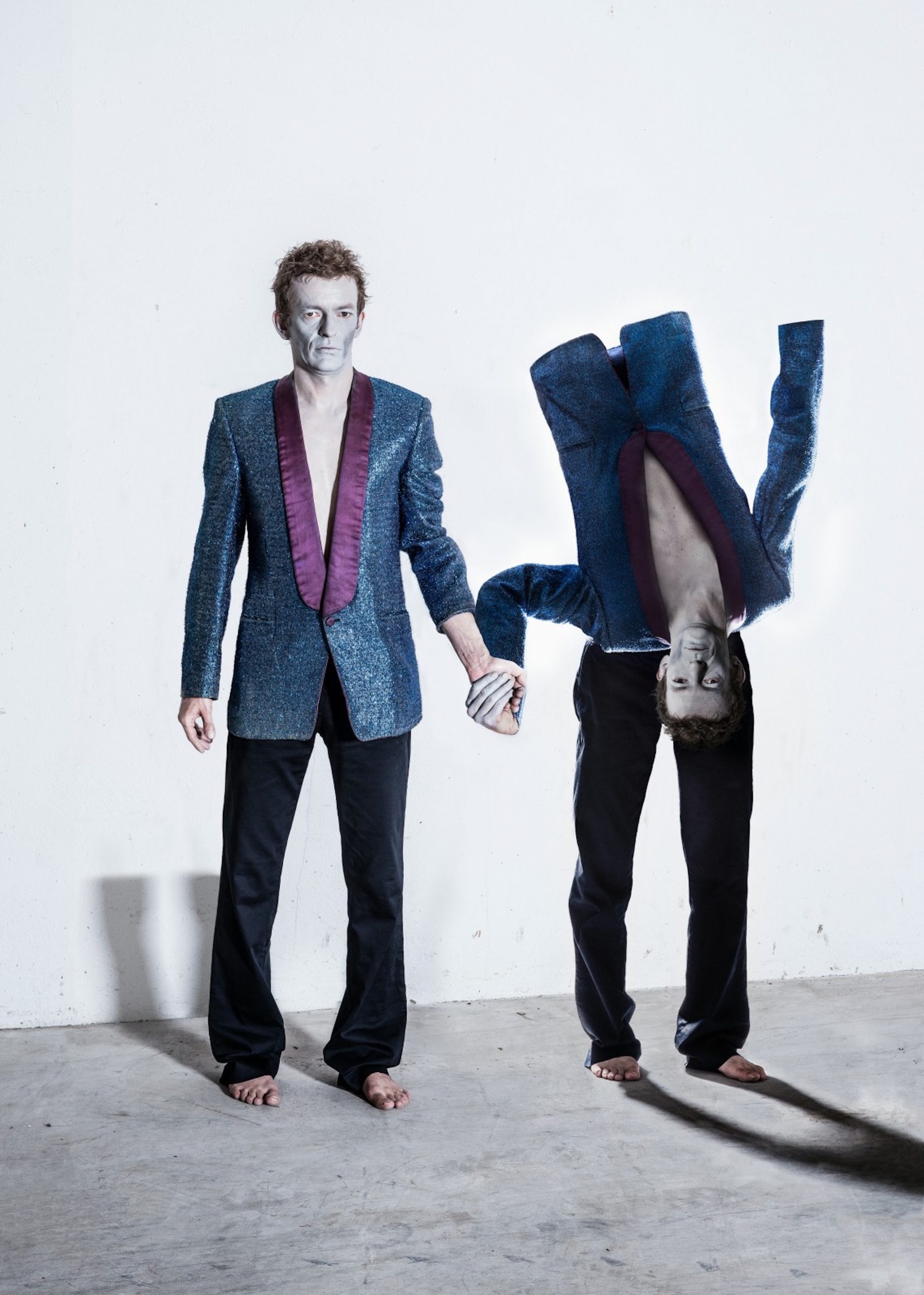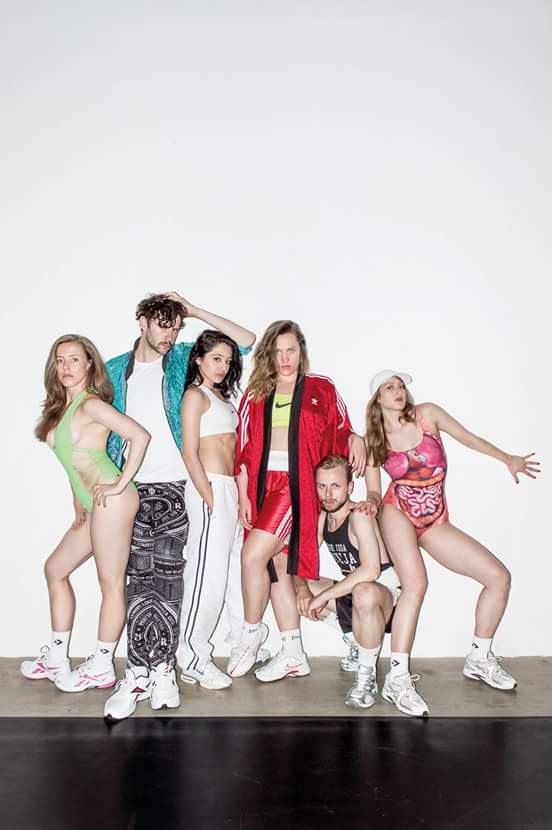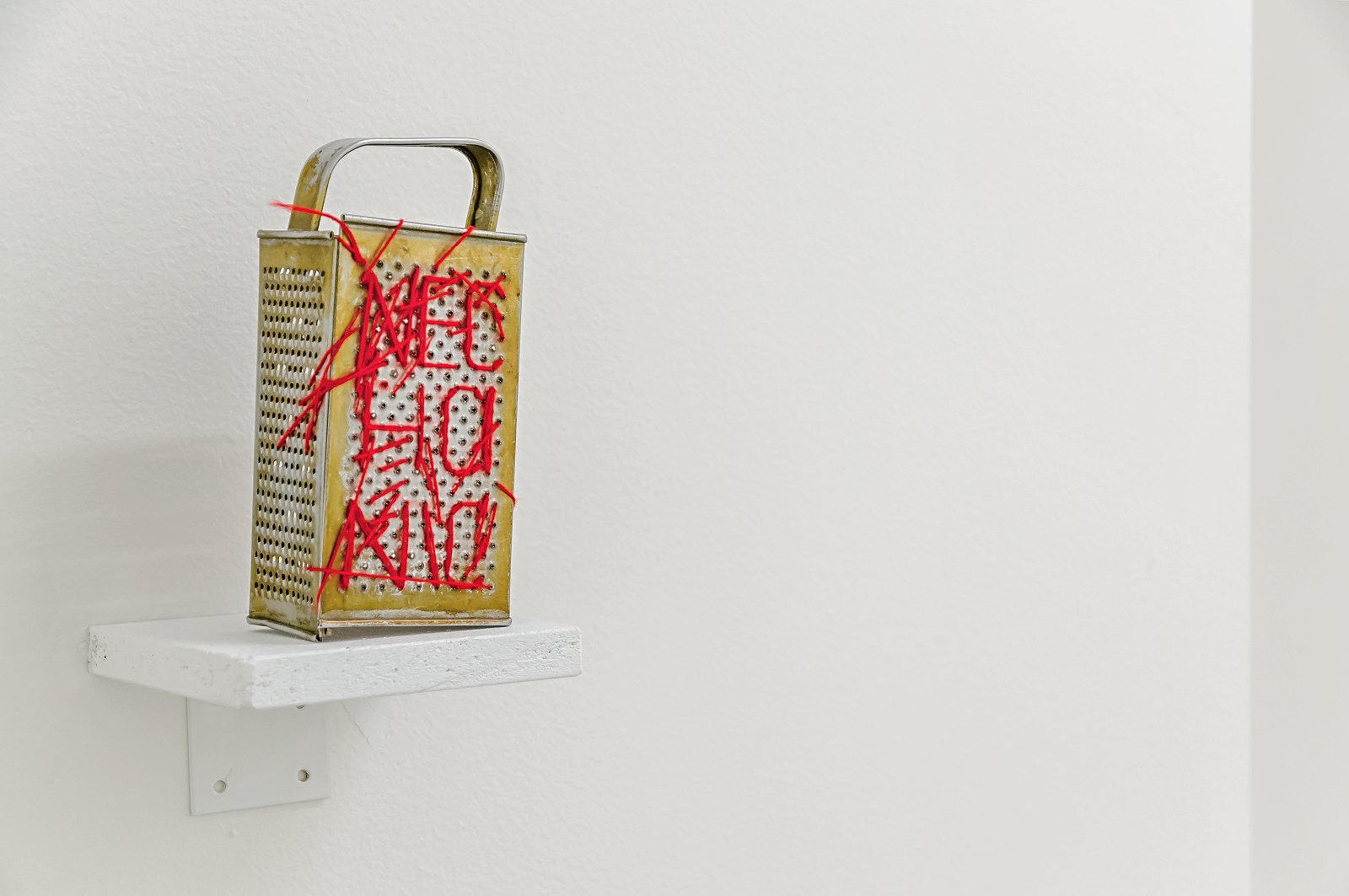It’s not unexpected to say that the last decade brought the rise of performative arts. On the international scene, the most discussed topic was the growing role of dance and choreography, especially in the context of museum and gallery display. The Polish art scene was not indifferent to these phenomena; in fact, over the past few years, there have been several significant re-evaluations in Polish performative arts. Probably the most important thing in this performative turn was the idea that performative artist should go beyond genre divisions and artistic prejudices, which had defined and frozen the Polish art scene for many years.

To understand these changes, it is important to slightly simplify the image of the Polish performative scene. Let’s say that it’s mainly divided into three areas – theatre, dance and performance art – until recently celebrating their individuality and traditions, from time to time looking suspiciously at their neighbors. Polish theatre – mostly founded on traditions derived from the theatrical concepts by Leon Schiller, Jerzy Grotowski and Tadeusz Kantor – to this day it is deeply immersed in the idea of monumentality and spiritual ritualism. In the case of the Polish dance scene, there is a joke that after Conrad Drzewiecki – the founder of Polish dance theater, who implemented the modern dance strategy in Polish dance during the 70’s and 80’s – nothing really happened. Young Polish dancers, who are active today, had to go to study abroad in order to learn about contemporary dance techniques. As for the visual art scene, the essential traditions for performance art were conceptual art and body art. In general, performance art was understood here as an individual and unique activity of the artist-performer, in which the notion of authenticity played an important role. The performance art community also managed to develop its own independent artistic network (mainly based on performance art festivals, such as Interakcje in Piotrków Trybunalski, the international performance festival Castle of Imagination [Zamek Wyobraźni] in Słupsk and Ustka, or Contexts a Festival in Sokołowsko), so that this community began to function separately from the rest of the art scene. Although there are many creators of performance art in Poland, it can be said that this community functions in the shadow of strong male figures, the precursors of Polish performance art in the 70s and 80s – such as Zbigniew Warpechowski or Jerzy Bereś – in whose works the performance art gained religious connotations, was conceived as a national mystery and a kind of ethical instruction for Polish society. Warpechowski is also known as the creator of the concept of avant-garde conservatism.
Of course, Polish art does not function in complete isolation, and following generations of artists have introduced some changes in the way of thinking about performance art. Artists such as Artur Żmijewski, Paweł Althamer or Elzbieta Jabłońska used strategies that can be combined with relational art. Another good example is Oskar Dawicki, an artist active since the 1990s, who deals with the achievements of the avant-garde of the 1970s and 1980s, in particular with the art of Zbigniew Warpechowski. In his performances, Dawicki shows the crisis of the performer’s ethos and the entanglement of art in market and institutional mechanisms. It can be said that thanks to his ironic approach to art, he has become a role model for the next generation of artists, especially those born after 1989, who perceived reality in a different way than their artistic predecessors, whose practice derives from the assumptions of the counterculture.

To make it simple, let’s say that the biggest change was the perception of performance art in terms of work – commissioned by and paid for by an institution. Work often performed in precarious conditions, for a small fee that is incompatible with the effort put into the work – this is probably something normal in Central and Eastern Europe. And this „normality“ causes the young generation of artists to take a rather sarcastic approach to the art world and the idea of art. It is also the reason why young artists willingly focus on independent activities, setting up their own groups, initiatives, and galleries.1 A good example is the Sandra Gallery, founded in 2008 by the intermedia artist and performer Dominika Olszowy. The aim of the Sandra Gallery was to support young female artists, largely students at the University of Arts in Poznań. The creators of the Sandra Gallery were obviously aware of the utopian nature of their project. The final degradation of the idea of the gallery’s independence took place in 2015, when, thanks to an invitation from the Center for Contemporary Art Ujazdowski Castle, the Sandra Gallery was transformed into the Horsefuckers Moped Club Gang. Performers, entering the gallery on old motorbikes, played the role of „contestants“, apparently acting for the money from the institution.
As for now, the Sandra Gallery has been taken over by the next generation of young artists from Poznań (Aleksandra Polerowicz, Magdalena Adameczek, Tomek Pawłowski), who focus on activities promoting the ideas of tolerance, cooperation and empathy. Moreover, sensitivity, commitment to activism and the need to renegotiate the socio-political status quo are postulates that are important not only to them. One of the most famous projects of the last few years was the Instagram activity of Zofia Krawiec, who popularized selfie feminism in Poland. The idea aroused much controversy and was criticized even by feminists, who found it too self-centered and pornographic. From today’s perspective, it seems that the Krawiec project was an accurate commentary on the self-presentation of women on the Internet and the politics of the image. What is also important, from the beginning of her project she was aware of the power of confession and its revolutionary significance in the contemporary emancipatory discourse. It is worth mentioning that this issue was discussed in Poland during the exhibition Ministry of Internal Affairs. Intimacy as Text, held in 2017 at the Museum of Modern Art in Warsaw (curator: Natalia Sielewicz). This exhibition significantly overlapped with the discussions around the #metoo movement, which happened also in Poland.
An important role in developing gender discourse in Poland is played by the Kem collective, formed mainly by dancers, choreographers and performers. Established in 2016 by Marta Ziółek and Alex Baczyński-Jenkins, Kem has played a key role in promoting the experimental methods and strategies of choreography and performance in Poland. Initially operating in the post-industrial area of Praga (one of the districts of Warsaw), it later temporarily moved to the Museum of Modern Art, Kem then began over a year of cooperation with the Center for Contemporary Art Ujazdowski Castle. At Ujazdowski Castle, artists from Kem initiated the Dragana Bar project, conceived as a series of queer raves taking place in the space of an art gallery. Probably we should think about this project as a hardcore version of the Musée de la danse invented by Boris Charmatz. Unfortunately, at the beginning of 2020, the conservative curator and journalist Piotr Bernatowicz became the director of Ujazdowski Castle, so as you can guess, the queering of Ujazdowski Castle will not be continued.

It is a big loss for the performative scene, considering the fact that Ujazdowski Castle had played an important role in Polish performance art. Its first director, Wojciech Krukowski, had significant influence on the shape of this institution. Krukowski was also an artist and founder of the performative group Akademia Ruchu (active since 1973; apart from Krukowski, the permanent members of the group were Janusz Bałdyga, Jolanta Krukowska, Cezary Marczak, Zbigniew Olkiewicz and Krzysztof Żwirblis), which became famous thanks to its experimental performances and street happenings. The tradition of Akademia Ruchu became the starting point for Agnieszka Sosnowska, curator of the exhibition Other Dances (Ujazdowski Castle, 2018), which summed up the performance turn in Polish art in the twenty-first century. In fact, the exhibition focused primarily on phenomena bordering on theater and dance, presenting the most interesting figures of Polish progressive theater (like Wojtek Ziemilski, Wojciech Pustoła, Chór Kobiet, Krzysztof Garbaczewski) and post-modern choreography (Anna Karasińska, Ramona Nagabczyńska, Agnieszka Kryst, Marta Ziółek, Magda Ptasznik, Iza Szostak, Paweł Sakowicz and more). An important role in this constellation was played by Komuna//Warszawa – an off theater, „anarchist community of activities“ founded in 1989 by Grzegorz Laszuk. Since November 2009 it has been operating under the name as Komuna//Warszawa and started to be a leading independent institution promoting a new generation of theater makers and choreographers. Komuna//Warszawa was an alternative to the mainstream theater scene, dominated by star directors producing plays with large budgets. At Komuna//Warszawa you don’t need to have a large budget or spectacular decorations. Formal minimalism and the ability to go beyond theatrical conventions are appreciated. This way of thinking about theatre – less artificial mimicry, more a performative situation – was named by theater theorist and curator Tomasz Plata as post-theater. What is also interesting in Plata’s theoretical proposals about contemporary theatre, is the assumption that contemporary theater breaks with the idea of a performance as a ritual and that it is a more secular experience. “Secular performance” theory has sparked strong discussion in the theater community, and not everyone agrees with it. It seems that ritual is still an important topic in Polish performing arts. For example, the young director Krzysztof Garbaczewski is inspired by the works of Jerzy Grotowski, and his performances take the form of VR spiritualist sessions. Choreographer Marta Ziółek explores contemporary forms of spirituality that replace traditional religions.
Another part of this problem is the potential that traditional theater can bring to the visual arts. The problem of props, puppets and the theatrical scenery was the key issue investigated by the curator Joanna Zielińska. Two of her exhibitions – Nothing Twice (Center for the Documentation of the Art of Tadeusz Kantor Cricoteka, 2014) and The Objects Do Things (Ujazdowski Castle, 2016) set a new framework for thinking about theatrical conventions and their potential. In discovering theater for art, Zielińska’s great ally is artist Paulina Ołowska, with whom she publishes Pavilionesque magazine, devoted to the subject of theatrical puppets. The problem of theatricality and theatrical decorations is an important theme in the work of Dominika Olszowy, who also cooperates with theaters as a set designer. In 2017 she also worked as a TV director, collaborating with Joanna Zielińska on the project PTV. Performance TV. The realization of the possibilities of various classical stage conventions (Stand up, opera? Yes!) is probably one of the biggest breakthroughs resulting from the performative turn that occurred on the Polish art scene. In the case of the visual arts, the tradition of classical performance art still remains a big challenge for young artists. For now, apart from Oskar Dawicki, there are few artists who are trying to engage in dialogue with masters of Polish performance art and conceptualism – the exceptions are such personalities as Karol Radziszewski or Przemysław Branas, who consistently queer this tradition.

The performative turn is still a fresh phenomenon, attracting interest and audiences; unfortunately has been stopped quite abruptly by the coronavirus pandemic and the freezing of the activities of art institutions and theaters. The time of the pandemic in Poland turned out to be very intense due to the controversial actions of the Polish conservative government. During the lockdown, the Polish government debated, among others, over the tightening of the anti-abortion law (once again) and the organization of presidential elections, which resulted in numerous civil protests. So it seems that in 2020 in Poland, performance moved from the institution to the streets. The artists were not indifferent to this situation. In the context of pandemic protests, it is worth mentioning the action Letter, organized by a group of artists and curators working together in the Consortium of Post-Artistic Practices, an informal group promoting art-activism. The action alludes to Tadeusz Kantor’s famous happening Letter from 1967. It consisted of the transfer by seven postmen of a 14-meter letter from the post office at Ordynacka Street in Warsaw to the Foksal gallery. The action was assisted by the police and a commentator who commentated on the performance like a football match. Repeated in May 2020, it acquired a new, very political meaning – it was an opposition to the idea of holding correspondence elections. The artists were punished with severe fines for their actions (20,000 PLN for breaking epidemiological restrictions), which were withdrawn under social pressure.
At the time of this writing, art institutions and theaters are again open to the public but operating under a new sanitary regime. Everyone is afraid of the second wave of the epidemic, but street protests still take place – there is a cultural war in Poland, taking the form of civic intervention by LGBT supporters and demonstrations by their radical opponents. How will the performance find itself in this new reality? Personally, I believe that the moment of the pandemic is a big challenge for the art of performance, but also makes us aware of its extraordinary importance. After all, it is a genre that places particular emphasis on human relationships, empowerment, compassion, and body awareness. Thanks to the epidemic, we are in a crisis of interpersonal relations and intimacy – the task of performance (art) is to fight for them. It may be a difficult battle, but it will definitely be an interesting one.
Karolina Plinta is an art critic and editor of the magazine Szum, she collaborates with Radio Kapital.





